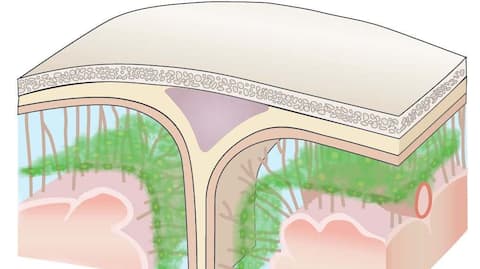Scientists reveal how the brain's waste removal system works
What's the story
Scientists have recently shed light on the brain's waste removal system, a process that has remained largely elusive until now. The human brain, composed of approximately 170 billion cells, generates significant waste during its regular functions. Two teams have published three papers on this, promising insights for treating brain-related disorders. These findings suggest that during sleep, slow electrical waves push fluid from deep within the brain to its surface where waste products are absorbed into the bloodstream.
Amyloid
The glymphatic system: Brain's waste disposal mechanism
The research, published in the journal Nature, explains that waste products in the fluid are absorbed into the bloodstream at the brain's surface. These waste products are then transported to the liver and kidneys for removal from the body. One such waste product is amyloid, a substance that forms sticky plaques in Alzheimer's patients' brains. This discovery could help researchers understand and potentially rectify impairments in Alzheimer's disease patients' brain waste-removal system.
Impact
Potential implications for Alzheimer's disease treatment
Jeffrey Iliff, a neurodegenerative disease researcher, highlighted the potential implications of these findings for Alzheimer's disease. He stated that there is growing evidence that the brain's waste-removal system is impaired in this condition. Iliff raised a critical question about whether restoring drainage could prevent the development of Alzheimer's disease. This research could help pinpoint where exactly this problem occurs and potentially provide a solution.
Origin
The glymphatic system: A decade-old concept
Over a decade ago, Iliff and Danish scientist Dr. Maiken Nedergaard proposed that clear fluids in and around the brain are part of a system designed to wash away waste products. They named this system the glymphatic system, drawing parallels with the body's lymphatic system which helps fight infection, maintain fluid levels, and filter out waste products and abnormal cells. This concept has been instrumental in understanding how the brain eliminates waste.
Analogy
Comparing the brain's waste removal to plumbing
Jonathan Kipnis of Washington University, an author of two of these new papers, likened both the glymphatic and lymphatic systems to a house's plumbing. Kipnis mentioned the presence of both water pipes and sewage pipes. He explained that clean water comes in and the dirty water goes out. However, unlike the lymphatic system which uses tubes to transport waste to the bloodstream, scientists questioned how waste molecules from deep within the brain reach its borders for removal.
